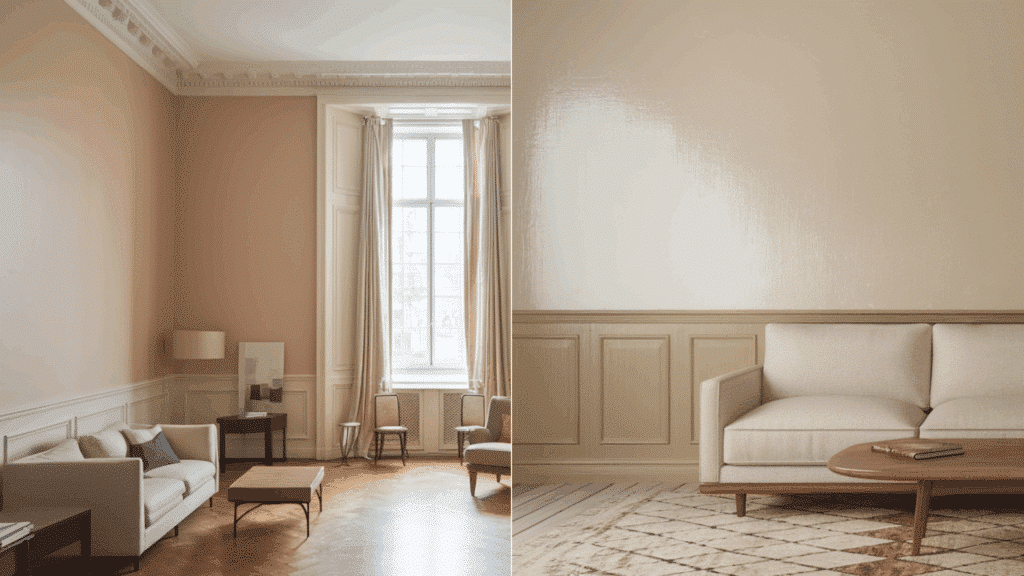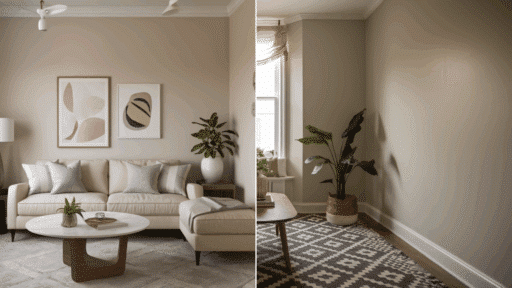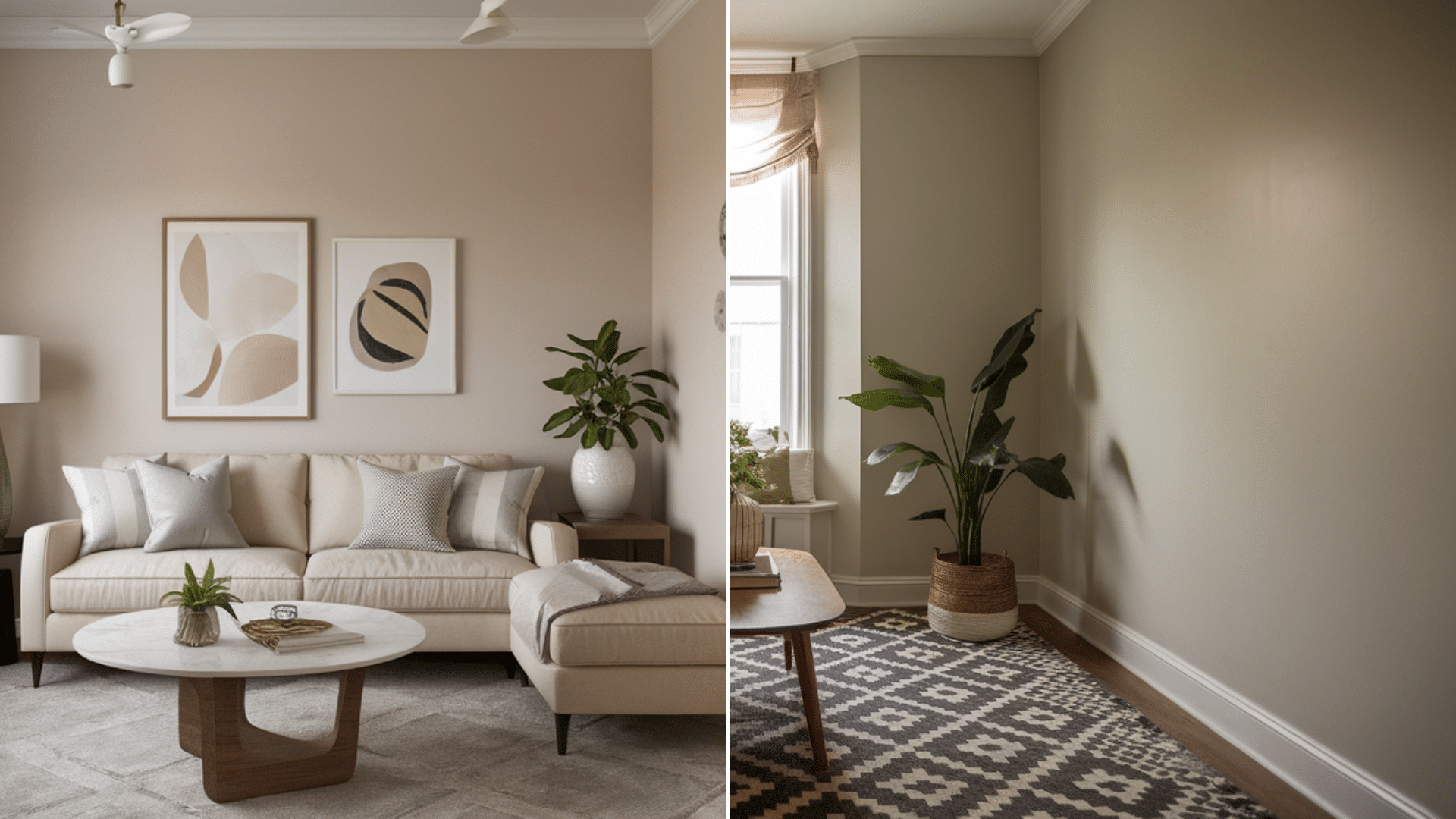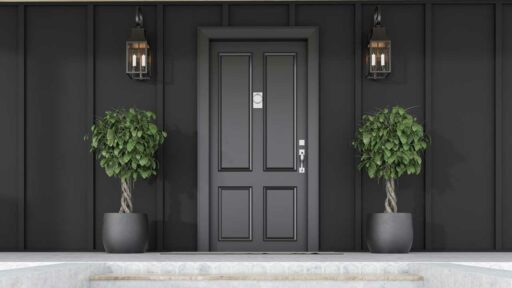
Choosing between latex and acrylic paint can feel confusing, especially when the cans look so similar. I used to think they were basically the same, but they work differently on your walls, furniture, and outdoor projects.
Both paints are water-based, but the materials inside them change how they perform, how long they last, and where they work best.
In this guide, you’ll learn the key differences in a simple way. By the end, you’ll know exactly which one to pick for walls, trim, furniture, or anything else you want to refresh around your home.
What is Latex and Acrylic Paint?
Latex and acrylic paint are two common options you’ll see when starting any home project.
Latex paint is a water-based paint that’s great for everyday indoor use. It spreads easily, dries at a steady pace, and has a low odor, which makes it ideal for walls and ceilings. It’s budget-friendly and simple to clean up with just soap and water.
Acrylic paint is also water-based, but it has stronger acrylic resins that make it more durable and flexible. It handles moisture, sunlight, and temperature changes better, which is why it’s often used outdoors or on surfaces that need extra strength.
Both paints can work well – you just need the right one for your project.
Latex vs Acrylic Paint: Key Differences
Latex and acrylic paint may look similar, but they act very differently once they’re on a surface.
1. Composition and Flexibility
Latex paint is water-based and usually made with vinyl or mixed binders. It works well for standard indoor surfaces but doesn’t stretch much when the surface expands or contracts.
Acrylic paint uses stronger acrylic resins, which help it flex and move with the surface. This makes it better for areas that face temperature changes or moisture.
2. Durability, Weather, and Moisture Resistance
Latex paint holds up nicely in dry indoor rooms and gives reliable coverage for walls and ceilings. But it can fade or peel faster when exposed to sun, rain, or humidity.
Acrylic paint is built to handle outdoor weather, moisture, and constant temperature changes. It stays stronger and more stable over time.
3. Coverage, Finish, and Color Retention
Latex paint offers smooth coverage on large walls and keeps a clean finish in normal indoor spaces. Its color may fade faster outdoors, especially in bright sunlight.
Acrylic paint sticks better to tricky surfaces and keeps its color longer, even under harsh sun. The finish also tends to stay fresher over time.
4. Drying Time, Odor, and VOC Levels
Latex paint dries at a moderate speed, which gives you more time to fix streaks or roller marks. It also has low odor and lower VOCs, making it comfortable for indoor painting.
Acrylic paint dries faster, which is helpful for quick projects but less forgiving for beginners. It also has low odor, but the faster drying can make touch-ups harder.
5. Cost, Ease of Use, and Cleanup
Latex paint is usually the more budget-friendly choice, often ranging from $20–$45 per gallon, depending on the brand.
It’s easy to roll on large walls and cleans up quickly with just soap and water. This makes it a great pick for everyday rooms and beginner DIY projects.
Acrylic paint tends to cost more, typically $35–$70 per gallon, because it’s made with stronger resins and built to last longer.
It holds up better in tough conditions, but once the paint dries on brushes or rollers, cleanup can take a little more effort.
Special Cases: Furniture, Crafts, and Touch-Ups
Painting isn’t only about walls or exteriors. Some projects need a paint that can handle bumps, detail work, or frequent cleaning.
| Project Type | Latex Paint | Acrylic Paint |
|---|---|---|
| Furniture & Cabinets | Easy to apply, but not as durable on high-touch areas | Stronger finish that holds up to cleaning and daily use |
| DIY Crafts & Art | Works for big backgrounds or simple designs | Better for detail, bright colors, and long-lasting results |
| Small Repairs & Touch-Ups | Blends well on indoor walls | Sticks better to tricky surfaces and lasts longer over time |
Some projects need extra strength, while others just need simple coverage. Choosing the right paint helps your furniture, crafts, and touch-ups look great and last longer.
How to Choose Between Latex and Acrylic Paint
Picking the right paint doesn’t have to be confusing. Once you know what each type does best, the choice becomes a lot easier.
When to Choose Latex Paint
- Great for dry indoor rooms like bedrooms and living areas
- Easy to roll on large walls and ceilings
- Low odor and simple soap-and-water cleanup
- Budget-friendly option for everyday projects
- Works well when you want smooth coverage without much fuss
When to Choose Acrylic Paint
- Best for outdoor surfaces exposed to sun, rain, or temperature changes
- Strong adhesion on wood, metal, and tricky surfaces
- Handles moisture in bathrooms, kitchens, and laundry rooms
- More durable for furniture, trim, and high-touch areas
- Ideal when you need long-lasting color and flexibility
The right pick depends on your surface and how much wear it will face. When in doubt, match the paint to the toughest condition in that space.
Conclusion
Latex and acrylic paint may seem similar at first, but they each bring different strengths to your projects.
Latex is great for everyday indoor spaces, giving you easy application, low odor, and simple cleanup. It’s the kind of paint you can rely on for bedrooms, living rooms, and large wall areas.
Acrylic paint, on the other hand, offers extra durability and flexibility, making it perfect for outdoor surfaces, high-moisture rooms, and furniture that gets a lot of use.
In the end, there’s no one “best” choice – just the best fit for your needs.
Think about the surface, the conditions, and how long you want the finish to last. With that in mind, picking the right paint becomes much easier.








